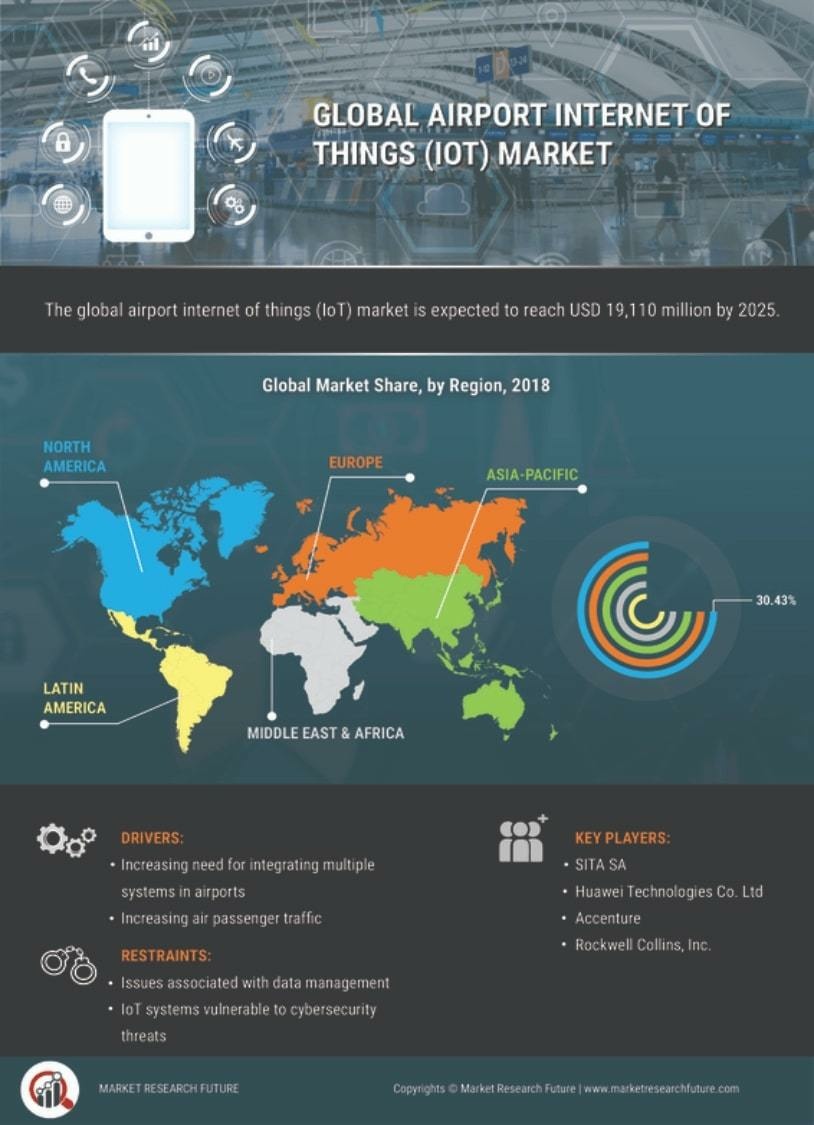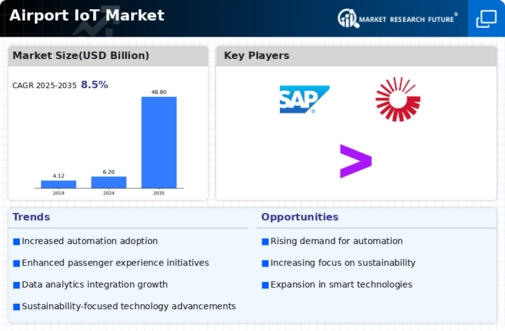The Airport IOT Market is currently characterized by a dynamic competitive landscape, driven by technological advancements and the increasing demand for operational efficiency. Key players such as Honeywell (US), Siemens (DE), and Cisco (US) are at the forefront, each adopting distinct strategies to enhance their market positioning. Honeywell (US) focuses on innovation through the development of smart airport solutions that integrate IoT technologies, while Siemens (DE) emphasizes digital transformation initiatives aimed at optimizing airport operations. Cisco (US) leverages its expertise in networking to provide robust connectivity solutions, which are essential for the seamless operation of IoT devices in airports. Collectively, these strategies contribute to a competitive environment that is increasingly centered around technological integration and operational excellence.
In terms of business tactics, companies are increasingly localizing manufacturing and optimizing supply chains to enhance responsiveness to market demands. The competitive structure of the Airport IOT Market appears moderately fragmented, with several key players exerting influence over various segments. This fragmentation allows for a diverse range of solutions, catering to the specific needs of airports worldwide, while also fostering innovation as companies strive to differentiate themselves in a crowded marketplace.
In November 2025, Honeywell (US) announced a partnership with a leading airport authority to implement a comprehensive IoT-based management system aimed at improving passenger flow and enhancing security measures. This strategic move underscores Honeywell's commitment to leveraging IoT technologies to address critical operational challenges faced by airports, thereby reinforcing its position as a leader in the market. The partnership is expected to yield significant improvements in efficiency and passenger experience, aligning with broader industry trends towards smart airport solutions.
In October 2025, Siemens (DE) unveiled a new digital platform designed to integrate various airport systems, including baggage handling and security operations. This initiative reflects Siemens' strategic focus on creating a unified ecosystem that enhances operational efficiency and reduces costs. By streamlining processes through digitalization, Siemens aims to provide airports with the tools necessary to adapt to evolving demands, thereby solidifying its competitive edge in the market.
In September 2025, Cisco (US) launched an advanced IoT security framework tailored for airport environments, addressing the growing concerns around cybersecurity in the aviation sector. This framework is designed to protect critical infrastructure from potential threats, thereby enhancing the overall safety and reliability of airport operations. Cisco's proactive approach to cybersecurity not only strengthens its market position but also highlights the increasing importance of security in the deployment of IoT solutions.
As of December 2025, the competitive trends within the Airport IOT Market are increasingly defined by digitalization, sustainability, and the integration of artificial intelligence (AI). Strategic alliances among key players are shaping the landscape, fostering innovation and collaboration. The shift from price-based competition to a focus on technological advancement and supply chain reliability is evident, suggesting that future competitive differentiation will hinge on the ability to innovate and adapt to changing market conditions.

















Leave a Comment